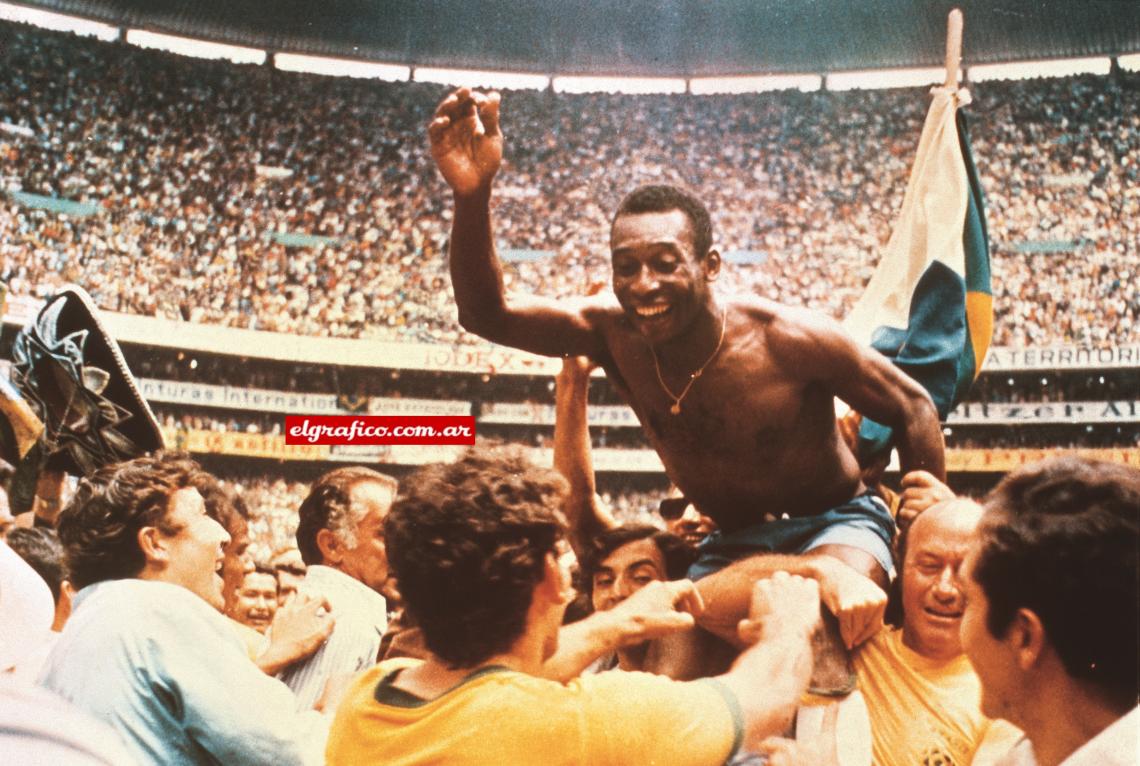
With the death of Brazilian soccer legend Pele on December 29, 2022, many fans are reflecting on the career of arguably one of the greatest athletes ever.
Pele, a legend, was not just a soccer magician but a center of politics in Brazil during the ’60s. After winning the 1958 FIFA World Cup in Sweden, the Brazilian star drew interest from top European clubs like Juventus, Napoli, and Real Madrid.
The Brazilian government was anxious to keep Pele playing in his native country for Santos FC and declared him an “official national treasure” in 1961. Throughout his storied career, Pele certainly lived up to this title, becoming not just a star in Brazil but also across the world.
Early years
Born on October 23, 1942, in the Minas Gerais city of Tres Coracoes in Southwestern Brazil, Edson Arantes do Nascimento was nicknamed Pele by peers at school when he mispronounced the name of a Vasco da Gama player Bile, who was said was his favorite player growing up. His father was João Ramos do Nascimento, nicknamed Dondinho, a prolific goal scorer who played for Fluminense.
Dondinho was the early trainer and mentor of the future global soccer icon. Pele’s mother, Celeste Arantes, was a full-time housewife to Dondinho. She was not supportive of her child playing soccer because she felt there needed to be more emphasis on academic studies rather than on a sport. She was worried being an athlete would cause him injuries as was the case with her husband, whose professional career was limited because of these.
Pele was named Edson in honor of American inventor Thomas Edison, who pioneered electric power generation. Although his parents tried to remove the ‘i’ from his name to make it sound unique, it was hard to completely adopt ‘Edson,’ as a mistake was made on his birth certificate and the letter ‘i’ was included.
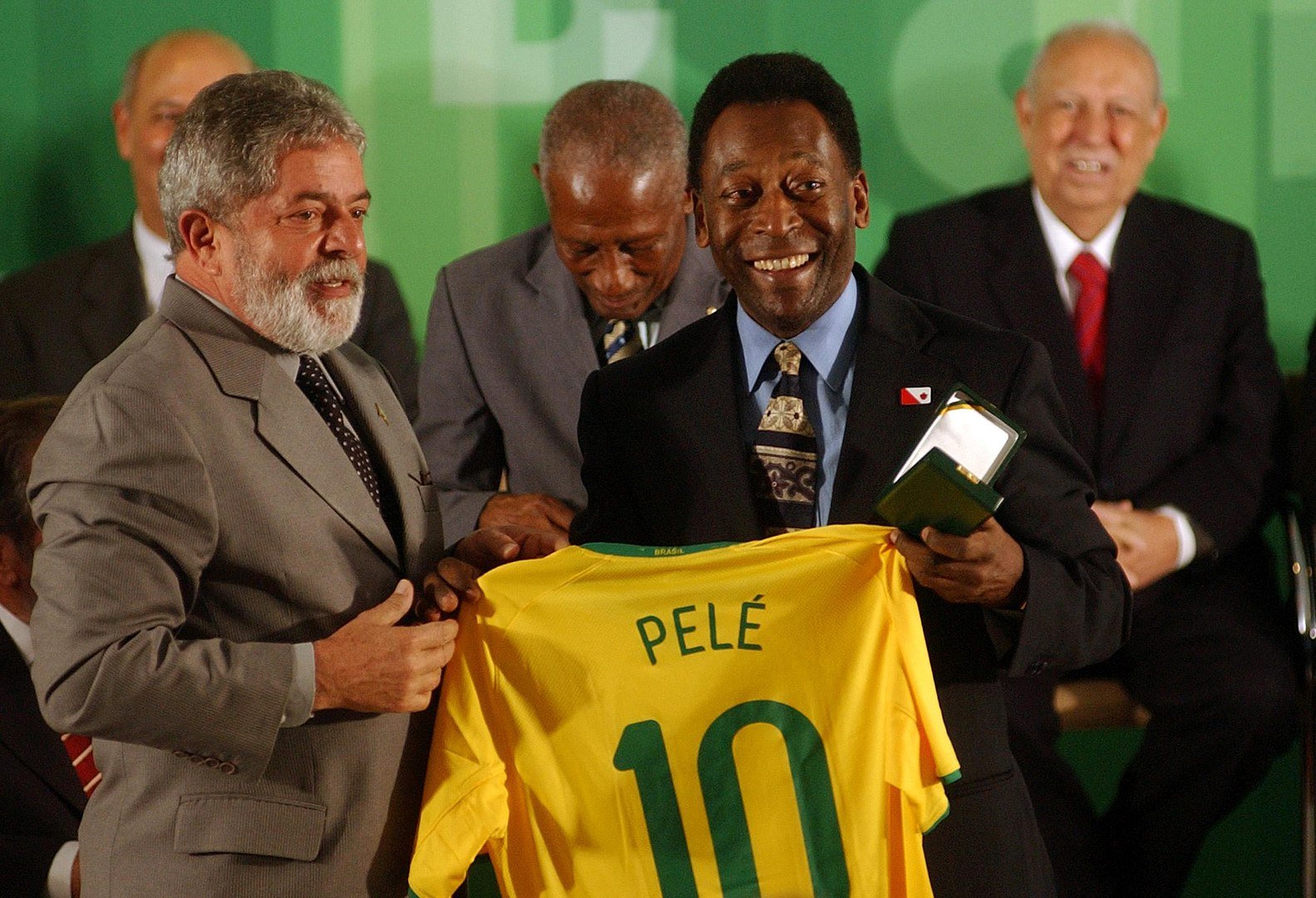
Pele’s first years playing soccer
When Pele was just six years old, his parents moved to the midwestern region of São Paulo to a town called Bauru, where Pele’s father had been playing with the Bauru Atlético Clube. It was here that Pele began playing soccer in extreme poverty, especially when his father retired in 1952. He was forced to play the game with balls made out of stockings stuffed with old newspapers or grapefruit because his father could not afford to buy him a proper soccer ball.
However, Dondinho kept instilling the skills for improvement in his son. Pele progressed through the youth ranks of Bauru Atlético Clube, and this is where Santos scout Waldemar de Brito spotted him.
Along the way during his early teens, he played futsal—indoor football, or soccer—for a team known as Radium. In his autobiography, Pele credits futsal for helping him think better on the spot.
After taking Pele to Santos in 1956, De Brito told officials that the fifteen-year-old would be “the greatest [soccer] player in the world.” This was almost two years after Brazil had been eliminated in the quarter-final stage of the 1954 World Cup in Switzerland by Hungary in “The Battle of Berne.”
Pele debuted for Santos in a 7-1 thrashing of Corinthians de Santo André in which he scored the first goal. In 1957 when he was handed a place in the starting lineup at age sixteen, he was the league’s top scorer with seventeen goals. His performance earned him a call-up to the national team by coach Vincente Feola for the 1958 edition staged in Sweden.
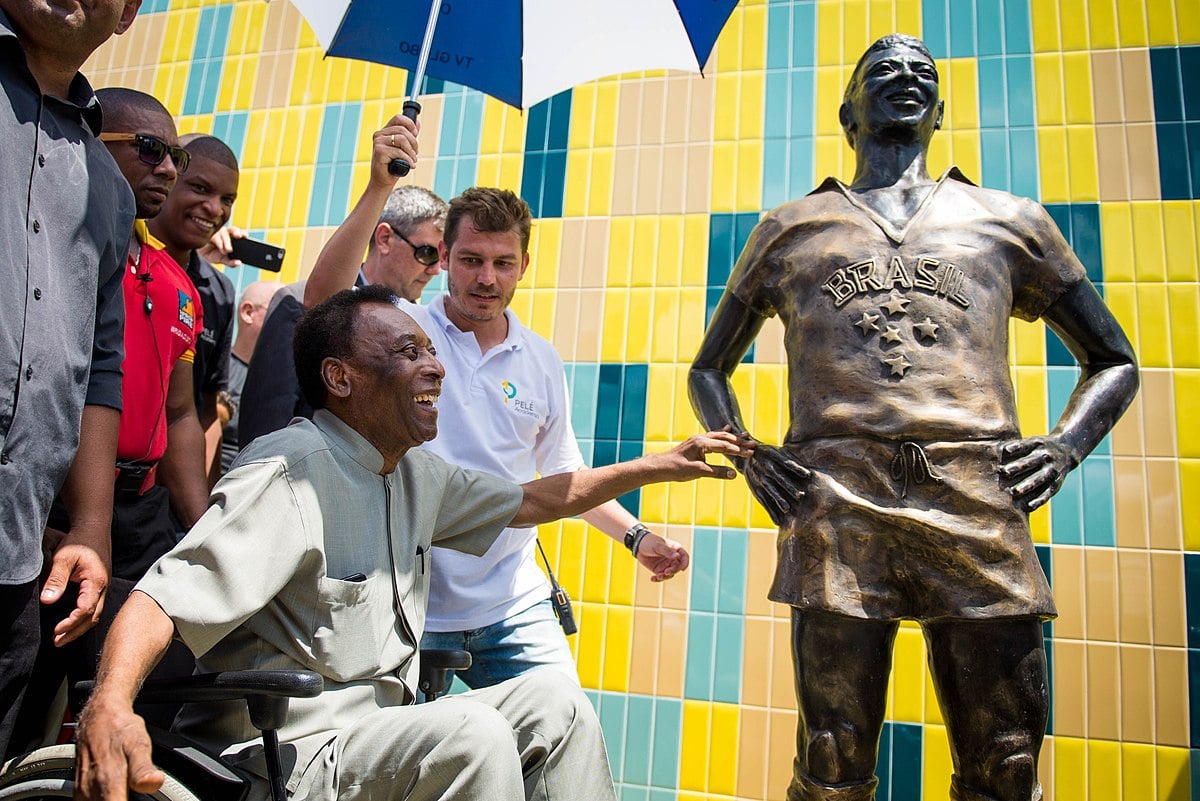
Pele during the 1958 FIFA World Cup
This came exactly eight years after Brazil was defeated by Uruguay on home soil in one of the biggest upsets in the history of the competition. Four years later in Switzerland, A Seleção got eliminated in the quarter-final stage in the Battle of Berne.
The seventeen-year-old Pele missed the first two group-stage matches against Austria and England. The match against England was the first in the history of the World Cup to end goalless. Pele played the last group game against the Soviet Union which The Seleção won 2-0, but it was in the quarter-final against Wales that he opened his scoring account.
He stepped up in the sixty-sixth minute in Ullevi Stadium to score the only goal of the match and send Brazil to the semi-final. With the brilliant volley, Pele, at seventeen years old, became the youngest goal scorer at the FIFA World Cup.
In the semifinal match played at Råsunda Stadium, Pele scored a hat-trick in a 5-2 win against France as Vava and Dida scored the other two. Just Fontaine and Roger Piantoni were on the score sheet for The Blues.
O Canarinho met the hosts Sweden in the final on June 29, 1958 in Solna, Sweden. The hosts had knocked out West Germany. Brazil replicated the semifinal score line, and Pele bagged a brace.
His first goal was a beauty to watch as the seventeen-year-old took control of the ball inside the penalty area, chipped it over a defender, and smashed it passed the goalkeeper. His second goal was a brilliant header in the ninetieth minute. To this date, Pele is the only player to score in the World Cup final before turning eighteen years old.
Pele was named the best young player of the tournament. He was the second joint top goal scorer with six goals. This was the first World Cup tournament to be internationally televised.
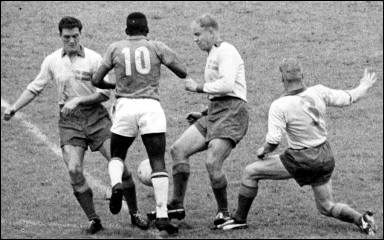
1962 World Cup in Chile
Playing against Pele was the hardest task any player of that time could face. No one could stop him, and he was unpredictable. Most defenders resorted to fouling him to limit his aggressiveness.
At the 1962 tournament staged in Chile, Brazil retained the trophy, but Pele played only two matches. The first group game against Mexico in which he scored the second goal in the 2-0 win at Estadio Sausalito, and the second match was against Czechoslovakia. It ended in a goalless draw, and Pele was injured.
During Pele’s absence, it was Garrincha who stepped up to inspire The Little Canary. Along with Vava, Garrincha scored four goals at the tournament, and his Botafogo teammate, Amarildo, scored three. Brazil defeated Czechoslovakia 3-1 at Estadio Nacional in Santiago.

1966 World Cup England
Although Brazil bowed out in the group stage in the 1966 World Cup tournament in England, Pele became the first player to score in three successive World Cup editions when he scored a stunning freekick against Bulgaria in the first match. Due to persistent fouls by the Bulgarians, Pele was unable to play in the next match against Hungary as a result of injury, and Brazil suffered a 3-1 loss at Goodison Park in Liverpool.
In the last group match against Portugal, Portuguese fullback Joao Morais infamously became the man of the day when he double-fouled the Brazilian star, causing an injury to his knee. Pele had to be subbed due to the injury.
Although the fouls were deliberate, English referee George McCabe allowed Morais to stay on the field without being booked. In 2010, The Telegraph included this among the ten worst refereeing errors in the history of the tournament.
Following a series of intentional fouls even from the previous tournament, Pele was so emotionally and physically affected that he vowed never to play in the World Cup again.
This was a time when cards were not in use in soccer, but after this incident and the persistent fouls against Pele in the first match against Bulgaria, the soccer governing body introduced yellow/red cards four years later.
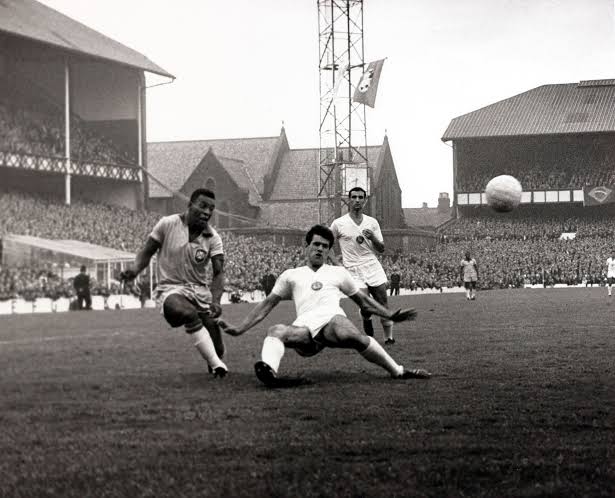
1970 World Cup Mexico
The Brazilian squad returned home in 1966 due to the political quagmire in the country. Getting to the 1970 World Cup, Brazil appointed Mario Zagallo to replace João Saldanha. Zagallo was a former squad member of the 1958 and 1962 World Cup-winning teams.
Brazil beat Czechoslovakia, England, and Romania 4-1, 1-0, and 3-2, respectively, to top group three. They defeated Peru 4-2 in the quarter-final at Estadio Jalisco, Guadalajara and registered a 3-1 victory over Uruguay in the semifinal to meet Italy in the final.
In the final played at Estadio Azteca in Mexico City on June 21, 1970, Brazil scored four goals past Italy and clung to a defensive system. En route to the final, Brazil won all the matches with a goal difference of three or more. Pele opened the scoring inside the first eighteen minutes, and the other three goals for Brazil were scored by Gerson, Jairzinho, and Carlos Alberto. Roberto Boninsegna scored the only goal for Italy.
This Brazilian team is still widely hailed as the best team ever. It was the first World Cup in which Pele played in every game and was named the tournament’s Best Player. Furthermore, it was also the first World Cup to be televised in color live. Pele holds the record for most World Cup trophies as a player who has played in all the first three triumphant campaigns by Brazil.
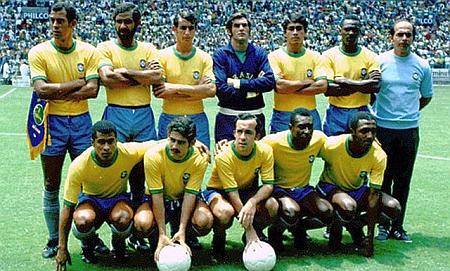
Pele’s legacy and final years
During an interview with FIFA in 2020, Brazil’s 2002 World Cup-winning captain said:
Pele revolutionized [soccer]. Pele stopped a war. Pele united countries, united families. There was no race problem, or language problem. I was born in 1970. In 2002, I became a world champion. I was captain. I had the honor of receiving the World Cup Trophy from no less than whom? Pele! Man! If I say any more I’ll cry. It’s really emotional!
Pele was appointed as UNESCO Goodwill Ambassador in 1994. In January 1995, he was also appointed as the Extraordinary Minister of Sports in Brazil by President Fernando Henrique Cardoso. During his term, many measures were taken to curb corruption in local soccer associations with the introduction of the Pele law, but he resigned in 1998.
Pele was hospitalized on November 29, 2022 at Albert Einstein Israelite Hospital in São Paulo. A medical report indicated that he had suffered cardiac and renal dysfunction. Pele had been battling colon cancer since September 2021. He passed away on Thursday, December 29, 2022.
Pele’s lasting legacy in the world of soccer is immense. He was the only soccer player to win the World Cup three times and remains Brazil’s joint-top goal scorer with seventy-seven goals in ninety-two games. At the club level, he scored 643 goals for Santos FC, making him the highest goal-scorer in the club’s history.
FIFA recognized Pele as “the greatest” soccer player ever, a sentiment shared by many fans. He was also included in the Time list of the one hundred most influential people of the twentieth century and named Athlete of the Century by the International Olympic Committee in 1999. Pele scored a total of 1,279 goals in 1,363 games, a feat recorded in the Guinness Book of World Records.
See all the latest news from Greece and the world at Greekreporter.com. Contact our newsroom to report an update or send your story, photos and videos. Follow GR on Google News and subscribe here to our daily email!



